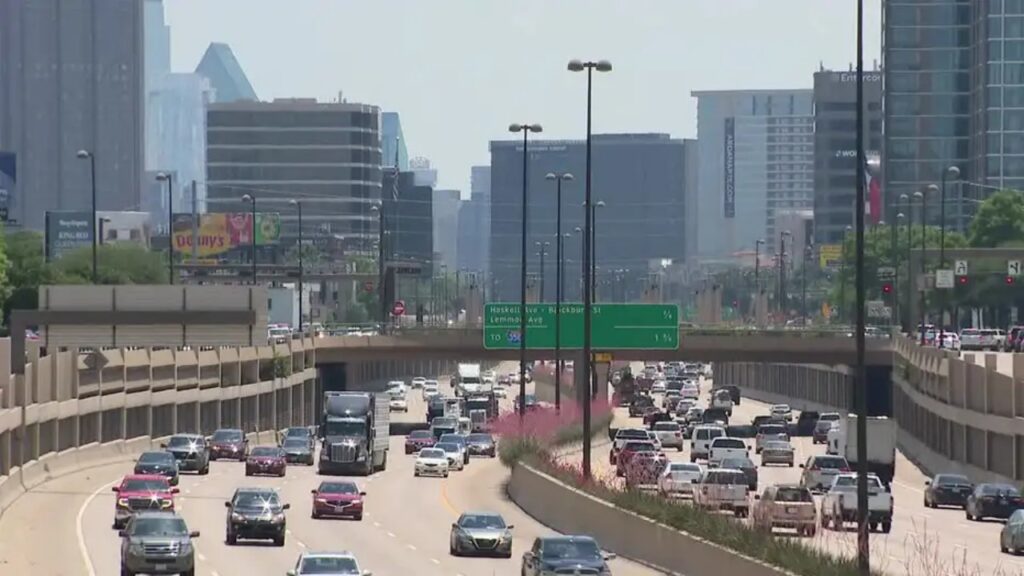Dallas, a sprawling metropolis known for its vibrant culture and bustling economy, is also gaining notoriety for its increasingly dangerous roads. With traffic fatality rates consistently higher than the national average, concerns about driver safety in the Dallas area have reached alarming levels in recent years.
The statistics paint a grim picture of road safety in Dallas. In 2023, the city recorded 205 traffic fatalities, and by the end of 2024, that number had risen to 207. These aren’t just numbers—they represent lives lost and families forever changed by tragedy. When compared to national averages, Dallas’s situation becomes even more concerning, with approximately 4.5 road deaths per 100,000 citizens versus the national average of just 1.5 per 100,000. This rate exceeds those of comparable major cities including Houston, Fort Worth, and Los Angeles.
Factors Contributing to Dallas’s Dangerous Roads
Urban Sprawl and Infrastructure Challenges
Dallas’s expansive urban layout creates unique challenges for traffic safety. The city’s development pattern has prioritized vehicular traffic, resulting in wide, high-speed roadways that often lack adequate safety features for all road users. Long commutes across the metropolitan area mean more time on the road and increased exposure to potential accidents.
The infrastructure itself presents numerous hazards. Many intersections throughout Dallas were designed primarily for vehicle throughput rather than safety, creating dangerous conditions particularly for pedestrians and cyclists. Inadequate crosswalks, insufficient lighting, and poorly timed traffic signals all contribute to the hazardous environment that characterizes many Dallas roadways.
Impaired Driving: A Persistent Deadly Problem
Despite decades of public awareness campaigns and increasingly strict enforcement, impaired driving continues to be a significant factor in Dallas traffic fatalities. Approximately 25% of fatal accidents in Dallas during 2023 involved an intoxicated driver. The combination of high-speed roadways and impaired judgment creates a deadly scenario that plays out with disturbing regularity on Dallas streets.
The consequences extend far beyond the impaired drivers themselves. Innocent motorists, passengers, pedestrians, and cyclists often bear the tragic cost of others’ decisions to drive while intoxicated. Despite enhanced penalties and enforcement efforts, the problem persists as a major contributor to Dallas’s high fatality rates.
The Growing Threat of Distracted Driving
In our increasingly connected world, distracted driving has emerged as one of the most significant threats to road safety. The temptation to check messages, make calls, or engage with mobile devices while driving has proven difficult to overcome for many Dallas drivers. Even a momentary distraction can have catastrophic consequences at highway speeds.
Research has shown that texting while driving increases crash risk by 23 times, and even hands-free phone conversations significantly impair driver attention. In Dallas’s complex traffic environment, with its mix of high-speed freeways, congested surface streets, and numerous construction zones, maintaining complete focus on driving is essential for safety.
High-Risk Corridors: Dallas’s Most Dangerous Roads
Certain roadways in Dallas have earned notorious reputations for their high accident and fatality rates. Interstates 35E, 30, and 635 consistently rank among the most dangerous, with their high traffic volumes, frequent merges, and varying speed conditions creating hazardous driving environments.
However, Loop 12 stands out as particularly deadly. In 2024 alone, this corridor saw 21 fatal crashes, making it one of the deadliest stretches of roadway in the entire Dallas area. The combination of high speeds, heavy traffic volumes, limited pedestrian infrastructure, and numerous access points creates a perfect storm for serious accidents.
City Response and Safety Initiatives
Vision Zero Action Plan
Recognizing the severity of the situation, Dallas has adopted a Vision Zero action plan aimed at eliminating traffic fatalities. This comprehensive strategy includes at least 40 specific steps and recommendations designed to create safer streets through a combination of engineering, education, and enforcement.
The plan takes a data-driven approach, identifying high-risk corridors and intersections for targeted improvements. It also acknowledges the disproportionate impact of traffic fatalities on certain communities and aims to address these inequities through strategic infrastructure investments and policy changes.
Enhanced Enforcement and Education
Dallas has increased police presence in high-risk areas, implementing strategic speed enforcement operations and targeted DUI checkpoints. These efforts aim to deter dangerous driving behaviors through visible enforcement while removing the most dangerous drivers from the roads.
Complementing these enforcement efforts are expanded education campaigns designed to raise awareness about the consequences of risky driving behaviors. These initiatives target specific high-risk groups, including young drivers, and focus on the most common contributing factors to serious crashes.

Infrastructure Improvements
Recognizing that enforcement alone cannot solve the problem, Dallas has accelerated infrastructure improvements aimed at creating safer streets. These include:
- Redesigning high-risk intersections to reduce conflict points
- Installing new pedestrian crosswalks with enhanced visibility features
- Implementing road diets to reduce speeds on particularly dangerous corridors
- Upgrading traffic signals with improved timing and pedestrian countdown features
- Adding protected bike lanes to provide safer options for cyclists
For Loop 12 specifically, the city has planned comprehensive safety upgrades including lower speed limits, enhanced signage, and additional pedestrian crossings to address its alarming fatality rate.
The Future of Road Safety in Dallas
Technological Solutions and Autonomous Vehicles
The emergence of advanced driver assistance systems (ADAS) and autonomous vehicle technology presents both opportunities and challenges for traffic safety in Dallas. While these technologies hold promise for reducing crashes caused by human error, their integration into the existing transportation system requires careful planning and regulation.
As autonomous vehicles increasingly appear on Dallas roads, questions remain about their safety performance and interaction with conventional vehicles. Without comprehensive government testing and safety standards, the impact of this technology on overall traffic safety remains uncertain.
Community Engagement and Behavioral Change
Ultimately, creating safer streets in Dallas will require more than just infrastructure improvements and enforcement. It demands a fundamental shift in how residents view and use the transportation system. Community engagement efforts aim to build a culture of safety where dangerous driving behaviors become socially unacceptable.
Grassroots organizations advocating for safer streets have gained momentum in recent years, pushing for policy changes and increased investment in safety improvements. These community-driven efforts complement official initiatives and help maintain focus on the human cost of traffic crashes.
Conclusion
The traffic safety situation in Dallas presents significant challenges that require comprehensive solutions. Consulting with a personal injury attorney Dallas residents rely on can provide valuable insight into the human impact behind these statistics, helping to highlight the urgency for change.
While the statistics remain troubling, the increased attention and resources being directed toward the problem offer hope for improvement. By combining strategic infrastructure investments, enhanced enforcement, education campaigns, and community engagement, Dallas can work toward reversing the current trends and creating a safer transportation system for all road users.
The path forward requires sustained commitment from city leaders, transportation officials, law enforcement, and the community at large. With continued focus and investment in evidence-based solutions, Dallas can transform its reputation from one of the most dangerous cities for drivers to a model of urban traffic safety.

